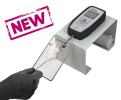Authors
He Fu, Beatrice Desvergne, Serge Ferrari, Nicolas Bonnet
Lab
Geneva University Hospital, and Faculty of Medicine, Geneva, Switzerland
Journal
Endocrinology
Abstract
Fragility fractures are recognized complication of diabetes, but yet the underlying mechanisms remain poorly understood. This is particularly pronounced in type 2 diabetes in which the propensity to fall is increased but bone mass is not necessarily low. Thus, whether factors implicated in the development of insulin resistance and diabetes directly impact on the musculoskeletal system remains to be investigated. PPAR?(-/-) mice have reduced metabolic activity and are glucose intolerant. We examined changes in bone and muscle in PPAR?(-/-) mice and investigated both the mechanism behind those changes with age as well as their response to exercise. Compared with their wild type, PPAR?(-/-) mice had an accelerated and parallel decline in both muscle and bone strength with age. These changes were accompanied by increased myostatin expression, low bone formation, and increased resorption. In addition, mesenchymal cells from PPAR?(-/-) had a reduced proliferation capacity and appeared to differentiate into more of an adipogenic phenotype. Concomitantly we observed an increased expression of PPAR?, characteristic of adipocytes. The anabolic responses of muscle and bone to exercise were also diminished in PPAR?(-/-) mice. The periosteal bone formation response to direct bone compression was, however, maintained, indicating that PPAR? controls periosteal bone formation through muscle contraction and/or metabolism. Taken together, these data indicate that PPAR? deficiency leads to glucose intolerance, decreased muscle function, and reduced bone strength. On a molecular level, PPAR? appears to regulate myostatin and PPAR? expression in muscle and bone, thereby providing potential new targets to reverse bone fragility in patients with metabolic disturbances.
BIOSEB Instruments Used:
Grip strength test (BIO-GS3)

 Pain - Thermal Allodynia / Hyperalgesia
Pain - Thermal Allodynia / Hyperalgesia Pain - Spontaneous Pain - Postural Deficit
Pain - Spontaneous Pain - Postural Deficit Pain - Mechanical Allodynia / Hyperalgesia
Pain - Mechanical Allodynia / Hyperalgesia Learning/Memory - Attention - Addiction
Learning/Memory - Attention - Addiction Physiology & Respiratory Research
Physiology & Respiratory Research
 Pain
Pain Metabolism
Metabolism Motor control
Motor control Neurodegeneration
Neurodegeneration Cross-disciplinary subjects
Cross-disciplinary subjects Muscular system
Muscular system General activity
General activity Mood Disorders
Mood Disorders Other disorders
Other disorders Joints
Joints Central Nervous System (CNS)
Central Nervous System (CNS) Sensory system
Sensory system
